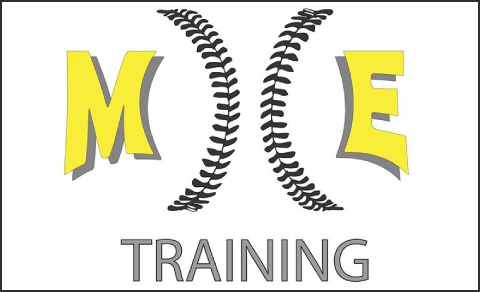I felt compelled to discuss this because I feel this is one of the only trends in Major League Baseball that has a chance to succeed at the lower levels, along with shifting (although we don’t have nearly the same data that they have available to them with Statcast and Sports Info Solutions). Most of the other trends, like building strikeout-machine pitching staffs, home run-dependent offenses and writing out batting orders based on lineup optimization just have no way of making its way to amateur baseball.

“The Opener”, an aspect of “bullpenning” could theoretically make its way into the lower-levels of baseball such as college.
At the most basic level, pitcher’s jobs are to get outs regardless of the inning. Nobody will debate that, but somewhere along the way, the consensus thought became that pitchers are either starters, closers, setup men, long relievers or situational one-out guys. A classic example of this would be the 2006 Mets, who built the best bullpen in baseball with Billy Wagner (closer), Aaron Heilman (set-up man), Darren Oliver (long reliever) and both Chad Bradford (right-handed one-out guy) and Pedro Feliciano (left-handed one-out guy). It was common to see the Mets save Wagner for save situations only. He rarely was used in a tie-game on the road, for more than 3 outs or in a “dirty inning” (with runners on base). This was typical for closers from the mid 1990s to now. These dominant pitchers were able to rack up 40 saves per year while rarely breaking a sweat. Nobody argued, because it became the norm.
![]()
Now we realize these “closers” were divas, rarely being used in situations that they can blow the game.
The new research suggests that a 3-run game in the 9th inning with nobody on base is not actually a high-leverage spot. Almost any competent pitcher can navigate their way to a “save” in that spot. The prevailing thought was that the “last three outs of the game are the toughest”. This is not actually the case.

As research shows us, the highest scoring inning is actually the first. There can be any number of reasons for this such as the pitcher not being acclimated to the mound yet, but the likely reason is because the opposing pitcher is facing the three best hitters in the lineup in succession. It’s the only inning that they are guaranteed to bat in order.
With that said, it makes sense to combat that from happening. If a “closer” is the final pitcher coming out of the bullpen to lock down the win, it would only make sense that an “opener” would be the first pitcher set to lock down the best hitters from scoring.

If this sounds foolish, it is only because you have been conditioned to think a certain way. If you think the game isn’t on the line in the first inning, think again. The game is always on the line, and it would stand to reason that you treat all 27 outs the same way. Your job is to navigate through those 27 outs to get a victory. The smart teams (10 this season) have used an “opener” and the Tampa Bay Rays did so close to 50 times, resulting in having the best ERA in the sport after May 1.
Disclaimer: None of this is necessary if you have a dominant pitching staff. Obviously, if you have a staff that consists of five durable lights-out pitchers that are capable of getting 21 outs in a game means that you don’t need to resort to any other tactics to win the game.
But how many teams can make that claim?

Not many outside of the Cleveland Indians, Chicago Cubs, Atlanta Braves and the reigning World Series Champion Houston Astros. Even the New York Yankees and Los Angeles Dodgers could have benefited from this.
Nobody else is above this concept which involves having a pitcher that has splits that are dominant against right-handed or left-handed hitters in a lineup that is particularly heavy on either of those. That pitcher, such as a Sergio Romo, who has held right-handed hitters to a .197 AVG and .332 SLG over an 11-year career would be the initial out-getter. Putting him against hitters like Mike Trout and Albert Pujols is smart. Assuming he records the outs, he comes out of the game. Then you put in your “starter”, who is probably your third, fourth or fifth best starting pitcher on your staff for the next turn through the order. Now, from the middle innings through the 9th innings, you manage the match ups, putting yourself in the best position to succeed and win the game.
Yes it gets difficult playing consecutive days, but the concept is that pitchers are put into situations that they can thrive, they are not throwing many pitches per outing and then they are ready to go when they are next called on. It seems trivial, but for a very, very long time, pitchers would never accept this concept of being ready whenever they are called on.
I know this, because I was one of those pitchers. I was always a “starter”, I was accustomed to pitching complete games until I got to college. I didn’t like being called on to put out fires, and if I did mess up, it allowed me to create the excuse that I wasn’t used to coming on in relief.
Coaches don’t like excuses, especially at the college level.
I played for two of the Long Island college coaches, Keith Osik and Dom Scala.
Both have their own styles of managing their pitching staff. When I played for Osik, he was much more likely to agree with the concept of bullpenning. We often used 5+ pitchers to get through a 7-inning game, sometimes 9 for a 9 inning game. But you know what? It worked. We won the Skyline Conference both years I was there, and we won a few playoff games using a bevy of pitchers. Granted, it helped to have a true ace that could get all 27 outs, but we won when Chris Phelan didn’t pitch too. In both years, we had 10 pitchers that we regularly relied on, with no set pitching staff.
During Scala’s most successful season in 2011, it was the opposite. Only 7 pitchers threw more than 20 innings, with three starters logging over 84 IP. And that was in a 50-game season. When his top four arms pitched, there was little-to-no need for a reliever, and if there was–it was one of two guys; Jimmy Milani or Oren Rasowsky.
It is two contrasting styles, and there’s no way to say what’s correct, but I can say that the consensus thought of rolling your bulldog out every day and only going to the bullpen when necessary is antiquated. You need to at least accept the concept that all 27 outs are created equal and there’s no limit on the amount of arms that you can use to navigate your way through it.
As a wise man once said, ‘adapt-or-die’














